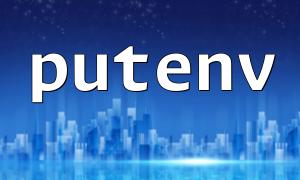Understanding the Relationship Between the Putenv Function and Environment Variable Scope, and Its Usage Techniques
In PHP development, the putenv() function is used to set environment variables for the current PHP process.
The format for the $setting parameter is typically "NAME=VALUE", where the function returns true if successful and false if it fails.
Example:
putenv("APP_ENV=production");
echo getenv("APP_ENV"); // Outputs 'production'
2. Scope of Environment Variables
It is important to note that environment variables set using putenv() are limited in scope to the current PHP process and its child processes. This means:
- It does not permanently modify system-wide environment variables.
- Each time the PHP process is restarted, the environment variables are reset.
- If a child process is called via exec or shell_exec, the child process can inherit these environment variables.
Example:
putenv("DB_HOST=localhost");
$output = shell_exec("echo $DB_HOST");
echo $output; // Outputs 'localhost'
3. Using Putenv with getenv
Usually, putenv() is used in conjunction with getenv() to dynamically adjust environment settings during program execution. For example, loading different configurations based on the environment:
if (getenv("APP_ENV") === "production") {
$dbConfig = "mysql:host=prod-db;dbname=app";
} else {
$dbConfig = "mysql:host=dev-db;dbname=app";
}
4. Common Usage Tips and Considerations
- Avoid depending on putenv in web server configurations: In web servers like Apache or Nginx running in multi-process or multi-threaded mode, environment variables may not be shared across processes. It is recommended to use configuration files or the $_ENV superglobal array.
- Use with $_ENV: In addition to getenv(), PHP can access environment variables through the $_ENV array. However, under certain configurations, $_ENV may be empty, and you need to enable variables_order in the php.ini file.
- Load configuration files dynamically: You can load different configurations based on the environment variables set by putenv(), allowing for flexible environment switching.
- Security Considerations: Avoid exposing sensitive information such as passwords or API keys directly in environment variables, especially on shared hosting environments.
5. Conclusion
From the introduction in this article, we can conclude:
- putenv() is a function for temporarily setting environment variables for the current process and its child processes.
- Unlike system-wide environment variables, its scope is limited and its lifespan is short.
- In practical development, it is recommended to combine getenv(), the $_ENV array, and configuration files for flexible and manageable environment management.
Mastering the scope and usage techniques of putenv() will make developers more efficient when managing multi-environment deployments, dynamically loading configurations, and adjusting temporary environments.



